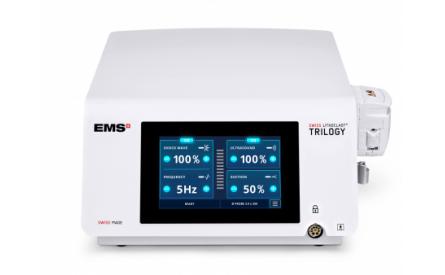Comparative evaluation between one ultrasonic and two single-probe dual energy lithotripters: in vitro and in vivo experiment in a porcine model
Marco Lattarulo12, Arman Tsaturyan1, Constatinos Adamou1, Konstantinos Pagonis1, Angelis Peteinaris1, Athanasios Vagionis1, Despoina Liourdi1,3, Theofanis Vrettos4, Claudio Simeone2, Evangelos Liatsikos1,5, Panagiotis Kallidonis1
1Department of Urology, University of Patras, Patras, Greece; 2Urology Unit, ASST Spedali Civili di Brescia. University of Brescia, Italy; 3Department of Internal Medicine, Agios Andreas General Hospital, Patras, Greece; 4Department of Anaesthesiology and ICU, University of Patras, Patras, Greece; 5Department of Urology, Medical University of Vienna, Vienna, Austria
Background
Percutaneous nephrolithotripsy (PCNL) is an approved surgical procedure of choice to remove medium to large renal stones (≥ 2 cm). Many features of the method have been considered worldwide, but the data comparing currently available lithotripsy devices is still lacking. The aim of this study was to compare the efficiency of three advanced lithotripters - one ultrasonic and two single-probe, utilizing a dual energy system. They were tested during treatment of artificial renal stones in the experimental in vitro and in vivo porcine models.
Materials & Methods
Three lithotripters were chosen for this study: Lithoclast®️ Master, Lithoclast®️ Trilogy (both EMS Medical, Nyon, Switzerland) and ShockPulse-SETM (Olympus, Tokyo, Japan). Researchers used them both in vitro and in-vivo during the PCNL of artificial renal stones (BegoStone Plus, Bremen, Germany). A proper weight ratio was maintained in order to mimic the features of hard and soft organic conglomerates. The study compared the stone clearance times (SCT) - time until the full fragmentation and evacuation of the composites. Research also took into consideration different probe diameters, type of probe (reusable vs disposable) and hardness of the stones. During the In-vitro setting, a clear polyvinyl chloride tube was used. Stones were located inside the tube and the experiment was performed with each device one by one. The established endpoint was the total stone clearance. To maximise the efficiency, the most powerful energy setting was used for each device. In vivo experiment was performed using a porcine model. Two lithotripters with the lowest SCT from the in vitro experiment were selected (Lithoclast Trilogy and ShockPulse-SE). With the guidance of a nephroscope, artificial stones were placed in the renal pelvis before lithotripsy procedure. To ensure comparability, several probe types and sizes were used for both devices.
Results
The efficiency of all investigated devices was significantly better in the management of soft stones, both in vitro (p<0.001) and in vivo (p<0.008). Use of disposable probes, in comparison with the multiple-use ones, resulted in faster stones evacuation (p<0.05).
In vitro
Lithoclast®️ Trilogy presented the best median SCTs with the small diameter probe: 34.9s and 12.2s for hard and soft stones, respectively. Other devices demonstrated longer SCTs, Lithoclast®️ Master: 48.2s (hard stones) and 26.1s (soft stones), ShockPulse-SETM 42.4s (hard stones) and 18.2 (soft stones) for the disposable small probe and 45.2 (hard stones) and 22.2 (soft stones) for multiple-use one. The same results were obtained for the large diameter probe: Lithoclast®️ Trilogy came up with the best median SCTs, 17.5s and 7.4s for the hard and soft stones, respectively. For the Lithoclast®️ Master, the SCTs of 46.1s and 21.1s were reported; results for the ShockPulse-SEwere 35.2s and 17.0s for the disposable large probe and 40.5s and 19.1s for multiple-use.
In vivo
SCTs using the Lithoclast®️ Trilogy were 69.2s for hard stones and 35.6s for soft stones. In contrast, Olympus ShockPulse-SETM. presented with longer SCTs; 130.2s and 59.4s for hard and soft stones, respectively. As in the in vitro setting, a significant difference for SCT was found between soft and hard stones.
Conclusion
Lithoclast®️ Trilogy, a dual-energy single probe lithotripter, was found to be the most efficient in comparison with both Lithoclast®️ Master and Olympus ShockPulse-SETM in all experimental settings. Faster SCTs were observed using the larger diameter and disposable probes. In vitro and in vivo studies like these help us understand better the device capabilities, although further clinical studies are required to verify received parameters.

